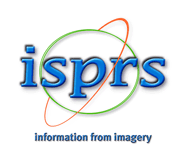A New Algorithm for Automated Diagnosis of Delayed Cerebral Ischemia in Video-EEG Monitoring Data
Keywords: Video-Electroencephalographic Monitoring, Delayed Cerebral Ischemia, Cross Correlation Function, Edge Map, Variation of Information, Epileptiform Discharge
Abstract. The paper proposes a new algorithm for automated diagnosis of delayed cerebral ischemia in video-EEG monitoring data. The algorithm uses the indicator of the delayed cerebral ischemia which is the number of epileptiform discharges per hour over a sufficiently long observation interval. It combines a detector of epileptiform discharges and a new motion artifact detector. The epileptiform discharge detection algorithm analyzes the cross-correlation function of EEG signals with a reference fragment pre-selected by medical experts. In the motion artifact detection algorithm, we propose to calculate the mobility index from blurred edge maps of the region of interest, which are less sensitive to fluctuations in illumination level. As an indicator of mobility, we use the variation of information, which characterizes the informational difference of video frames. We obtained preliminary results that confirm the effectiveness of the proposed algorithm. The developed algorithm for early automated diagnostics of delayed cerebral ischemia provides sensitivity equal to 0.9 and specificity equal to 0.79. The obtained quality measures correspond to the quality level of known methods for diagnosing delayed cerebral ischemia based on EEG signals. At the same time, the accuracy of detecting motion artifacts is 0.9, and the F1 score is 0.93. The detection algorithm for epileptiform discharges provides sensitivity of 0.95 and specificity of 0.85.





